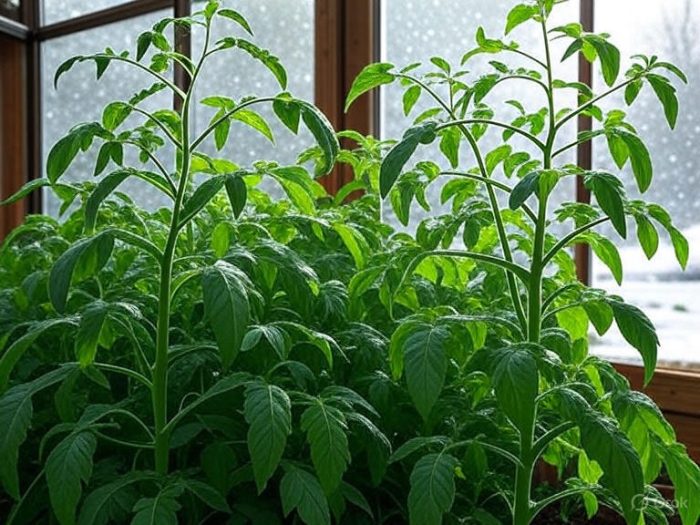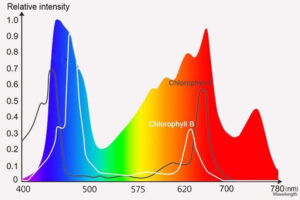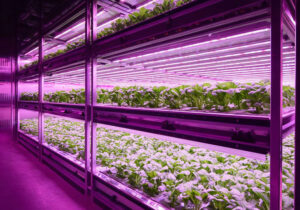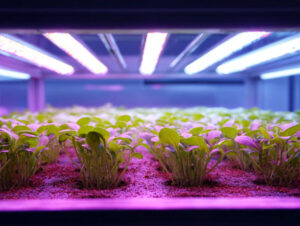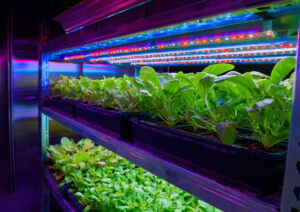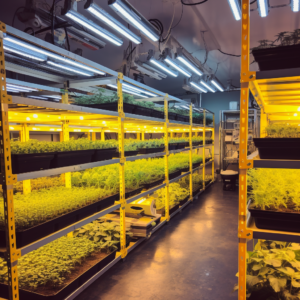
Indoor cultivation is typically associated with warm summers and abundant sunshine. But how to make cultivation in chill? The answer is yes, but there are several essential tips and tricks to keep in mind. In this comprehensive guide, we’ll provide you with all the information you need for a successful cultivation during chilly winter months.
Selecting the Right Genetics for Cultivation in Chill
The genetics of your crops play a significant role in your cultivation success. To achieve a respectable harvest during cold seasons, it’s crucial to start with the right genetics. Look for strains with origins in cooler regions of the world. Indica-dominant strains and landrace varieties from mountainous areas in Asia are well-suited for colder temperatures, unlike saliva’s. These strains, originating from Ruderalis, are known for their hardiness and quick life cycle, making them ideal for early spring or late autumn harvests.
Understanding the Effects of Cold Weather on Crops
Cold weather poses dual threats to indoor cultivation. Firstly, it risks shocking the plant’s root systems, crucial for overall health. When soil temperatures dip below 12°C, metabolic processes slow, hindering water, nutrient, and oxygen absorption. This slowdown may lead to stunted growth, wilting, or even hermaphroditism in some strains, causing self-pollination and reduced yields. Secondly, in the presence of moisture, cold weather fosters mold growth, particularly on leaves or flowers, presenting a persistent challenge for cultivators to address.
How Cold Can Strains Tolerate
To determine how cold strains can get before issues arise, we must consider the ideal temperature range for these plants. Generally, crops thrives at temperatures between 20-25°C, depending on its life cycle stage. Vegetating plants prefer warmer temperatures, typically coinciding with the peak of summer. In contrast, flowering plants tend to prefer slightly cooler temperatures, particularly at the beginning of autumn. The ideal soil temperature for healthy root growth falls between 15-20°C. While slight deviations from these ideal temperatures won’t necessarily be fatal for your plants, maintaining these conditions, especially when growing indoors, will ensure optimal growth.
Extending the Growing Season: Late or Early Harvests
One reason you might consider growing crops during cold months is to secure an extra harvest before or after the traditional growing season. To achieve this, we recommend using air venation system to equilibrium temperature for indoor grow rooms. Keep in mind that this technique is viable in regions with mild winters or warm springs. In areas with harsh winters and unpredictable spring temperatures, constructing a greenhouse is a necessity to protect your plants from the elements.
Effect of Cold Temperatures on Flowers
Many indoor growers intentionally lower temperatures in their indoor grow rooms during the bloom phase. This practice replicates the natural temperature fluctuations that outdoor plants experience and can stimulate bud development. Lowering temperatures gradually may also encourage plants to produce buds with purple hues, a desirable trait for many growers.
Growing Strains Outdoors in Winter: A Cautionary Note
Growing strains outdoors during winter is generally not recommended unless you live in an area with mild winters and low rainfall. In such regions, you may end up with weak and unhealthy plants, along with poor harvests. However, if you are determined to cultivate outdoor plants in the cold season, here are some tips to keep them healthy and maximize your results.
Maintaining Optimal Conditions Indoors: Be Careful with Light Exposure
If you need to bring your plants indoors to protect them from the harsh winter, do so carefully. Pay close attention to daylight hours and temperatures, and try to replicate these conditions indoors as closely as possible. For flowering plants, it’s crucial to avoid exposing them to more light indoors than they received outdoors, as this can lead to revegetation, a stressful process for the plant.
Forced Flowering Outdoors: A Creative Solution
If you can’t move your plants indoors in time to save them from winter, consider planning ahead for forced flowering outdoors. Cover your plants with a light-proof structure or fabric during their new “nighttime” hours. This will give them the impression that the seasons are changing, prompting them to transition into the flowering phase accordingly.
Moving Plants to a Greenhouse: Year-Round Cultivation
Greenhouses offer the opportunity to cultivate strains year-round, provided you have control over lighting, temperature, and humidity within the structure. However, it’s essential to consider some key factors before setting up a greenhouse for your cultivation.
Old School vs. Next-generation Lighting in Cold Weather Cultivation
The choice of lighting systems for your indoor grow significantly impacts your plants’ growth, especially in cold weather. Here, we’ll explore how traditional and next-generation lighting systems handle the challenges of cultivating strains in cold conditions.
Why the Old School Indoor Grower Embraces Cold Weather
Traditional High-Intensity Discharge (HID) systems emit substantial heat and light, providing an advantage for preserving mother plants and cuttings during the winter months. Additionally, it’s easier to maintain the vegetative growth phase with an MH bulb under an 18+ hour light cycle during cold weather.
Why the Next-generation Grower May Need Extra Heat in Winter
LED grow lighting systems are becoming increasingly popular among horticulture cultivators. They run cooler, emitting more light, which usually aids in environmental control. However, LEDs can run too cold during winter, potentially negating the energy savings. High humidity may also become an issue, necessitating the addition of a dehumidifier during the flowering phase.
Challenges with Compact Fluorescent Lights (CFLs) in Cold Weather
CFLs become less effective during prolonged periods of cold weather, even with the highest wattage bulbs available. This can be problematic when battling frosty winters, potentially leading to bud rot.
The Benefits of Cultivating Strains in Cold Weather
One fascinating aspect of growing crops in cold weather is the increased likelihood of certain strains displaying beautiful lilac and deep purple shades, a highly desirable trait for many indoor cultivators.
Introducing the HM Series LED Grow Lights
To enable cultivation in cold conditions and enjoy iconic strains, we’ve integrated ruderalis genetics into our exclusive variety, the HM Series LED Grow Lights. With a short flowering time of 5–7 weeks and a THC content of 14%, these lights deliver an uplifting and manageable high. Moreover, you can expect respectable yields, ranging from 170–220g/plant outdoors to 500–550g/m² indoors when the plant is ready for harvest.
-
 HM960 led grow light$1,199.00
HM960 led grow light$1,199.00 -
 HM660 led grow light$825.00
HM660 led grow light$825.00

